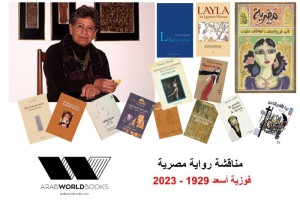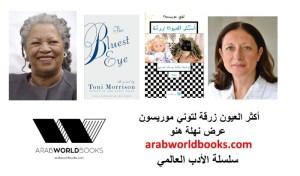by Mennat-Allah El Dorry
The world has always been spellbound by Egypt. This fascination, present since the times of the Greeks and Romans, has been called “Egyptomania”. The earliest tangible evidence of Egyptomania dates to the Greek times, when the Greek historian Herodotus travelled Egypt circa 450BC, writing down his famous histories. The reasons for Herodotus' fascination cannot be pinned down, but since then tourists have flocked to Egypt. As a result of Egypt’s popularity as a holiday destination, “Egyptomania” is now all over the globe, in literature, art, architecture, music, and especially film.
The theories behind the popularity of ancient Egypt in films are numerous. One of the principal reasons is the sense of immortality that pervades the ancient Egyptian history. The desire for immortality, as well as the allure of an exotic life, are the reasons behind the obsession with Egyptology, and thus its depiction in film. When cinema was still in its infancy, early filmmakers hurried to bring together this spectacular novelty of filmmaking with an older, yet equally spectacular, fixation, ancient Egypt. Perhaps nothing has more universal appeal than everlasting and exotic worlds. Ancient Egypt was a popular theme in films because of its timeless nature, and this immortality was made available in modern times through cinema.
The primary reason Egyptomania penetrated film the way it did was the celebrated discovery of King Tutankhamun's tomb in 1922. This discovery received worldwide coverage, and people read about it almost daily. Within the next 10 years, several members of Lord Carnarvon mission who worked on Tutankhamun’s tomb ‘mysteriously’ died. The public, hungry for mystery, followed the news closely, believing in the “Curse of the Pharaohs” as the cause of these deaths. Though the curse is an urban legend hyped up by the media coverage of the time, interestingly it does have its origins in ancient Egypt. Throughout most of the history of ancient Egypt a warning was often inscribed on the outer walls of tombs, warding off any possible consecrators. Of course, this hype was also helped by the aftermath of World War I which has ended a few years earlier, and people were in search of a distraction from their daily distress. The belief in the curse lead to the recurring moral of almost all Egyptomania movies: those who consecrate the tombs of the ancients will suffer horrific consequences. Egyptomania films were so popular and successful, that even a sub genre of Egyptomania movies was made – Mummy Movies.
Mummification was first recognized as a method of preserving the dead when the ancients noticed the excellent state of the bodies buried in the hot desert sand. It became essential to the Egyptian religion, which believed in an afterlife. Methods of mummification varied with the class of the deceased and the time period, and a variety of techniques were practiced, from exsanguinations to evisceration to extirpation. The priority was the removal of any liquid that would accommodate bacteria and fungi. One of the main conditions for an afterlife was having an intact mummy so that your ka (soul) would be able to recognise it and rejoin it.
Mummy movies were made as early as 1899, and as many as 9 silent Mummy movies were made, varying from mummies coming back to life, to mummy cults, to comedies where characters merely dress themselves up as mummies. Generally, Mummy movies are considered as a horror sub-genre, with a plethora of literature classifying mummies as a traditional movie monster, head to head with Frankenstein and Count Dracula.
Aside from the reasons of the depiction of ancient Egypt in cinema, the depiction of mummies has its own reasons. The discovery of Tutankhamun’s tomb in 1922 was the inspiration for prototype of talking Mummy movies, Karl Freund’s classic The Mummy (1932) . Freund’s background in German Expressionism and horror films helped him in directing The Mummy, one of the classics of horror films. He brought the psychological terror typical of German Expressionism to The Mummy, as most of the horror of this film lies in the audience’s imagination rather than onscreen terror. The shadows cast by the characters on the walls, the slow moving of the Mummy, the fear of the unknown, were very similar to early German films. Mummies also make the ideal movie monster because they have “the necessary human shape…and hold all the horror of a thing returned from the dead .” A Mummy’s grunts, slow awkward movements are reminiscent of its fellow horror character Frankenstein, who was also risen from the dead; just like Dracula who constantly comes back from the dead.
In 1941 another Mummy movie was made by Universal, ingeniously named The Mummy’s Hand, directed by Christy Cabbane. By this film, Universal added the Mummy image to its pantheon of movie monsters , launching the Mummy as a “silent menace similar to the 1940s image of the Frankenstein Monster ”. In 1942, the Mummy was awakened again in The Mummy’s Tomb, directed by Harold Young. During this period, horror films had become more like thrillers rather than psychological terrors, with more action and chases, accompanied by a boisterous score . This third film in the Universal series included more action scenes than its predecessors did. They were followed by two more in the series, the Mummy’s Ghost (1944), directed by Reginal LeBorg, and The Mummy’s Curse (1944), directed by Leslie Goodwins .
Death is feared. Mummies are proof that maybe death can be cheated, and immortality achieved . Mummies provided early filmmakers with a gripping subject for their films, a subject that draws the public in for its mythical antiquity, its allusions to immortality, and for its resident horror. Like Dracula, The Mummy had outlandish roots; and like Frankenstein, it had risen from the dead without its accord, to exist among the living, slowly moving and sending terror into the hearts of he who stands in its way.
Notes and References:
1- Freund was the cinematographer of the German films such as Fritz Lang’s Metropolis (1927), The Last Laugh (1925); and for Universal Dracula (1931), directed by Tod Browning, and Murders in the Rue Morgue (1932), directed by Robert Florey.
2- The film has now come to be billed simply as Karloff’s The Mummy. The film tells of a mummy who comes back to life and searches for his beloved Ankhsenamoun (incidentally the name of king Tutankhamun’s wife).
3-German Expressionism in an early movement in German cinema which had its very distinct style and themes.
4- Gifford, 46
5- Glut, 170.
6- Glut, 171.
7- Glut, 170
8- These five films were meant to be, somehow, a continuous series, yet there are discrepancies between them, such as time gaps (Gifford 46-51). If calculated, the fifth mummy film would be set in 2026!
9- Brier “Egyptomania!”
Brunas, Michael, John Brunas and Tom Weaver. Universal horrors: the studio's classic films, 1931-1946. Jefferson, N.C.: McFarland, c1990.
Gifford, Denis. Movie Monsters. London: Studio Vista Limited, 1969.
Glut, Donald F. Classic Movie Monsters. Metuchen, N.J.: Scarecrow Press, 1978.
Lant, Antonia “The Curse of Pharaoh” in Bernstein, Matthew and Gaylyn Studlar, eds. Visions of the East: Orientalism In Film. New Brunswick, N.J.: Rutgers University Press, 1997




